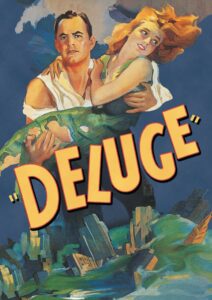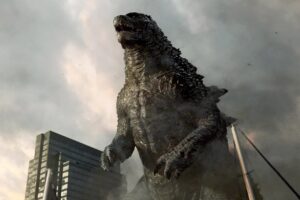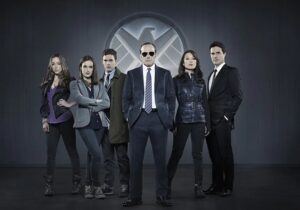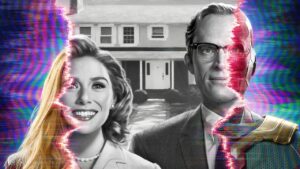Post-Apocalyptic Progenitor: Deluge
Recently on an episode of the podcast Junk Food Cinema one of the hosts, C. Robert Cargill, made a brief foray into the history of post-apocalyptic movies as part of their discussion centered on the satirical movie A Boy and his Dog. In that history when he talked about the original post-apocalyptic film, I expected him to detail 1936’s The Shape of Things to Come by H.G. Wells which covers a war that shatter civilization, the barbarity that followed, and the eventual enlightened society that developed. (It is really a fascinating movie with a look at the horrors another world war might bring created during the interwar period.) Instead of that film Cargill talked about an earlier movie 1933’s Deluge.After a little bit of searching, I found a Roku channel that streamed the movie and watched it last night.
Clocking in at a lean 70 minutes Deluge wastes no time in telling its story. Centered on three principal characters Martin and Helen Webster along with their two small children and Claire an athletic swimming champion socialite. However, none of the three are present much in the film’s establishing act. Scientists are concerned by strange weather patterns portending massive storms. A series of earthquakes moving eastward that submerge the entirety of the US’s West Coast along with reports of similar seismic events from Europe indicate a global  catastrophe that crashes all of civilization. Martin and Helen attempt to endure the terrible storms but are separated leaving Martin as the apparently sole survivor of the family on an isolated spit of land. Claire finds herself at the hands of a pair of men as equally uncivilized at the landscape. She escapes and discovers Martin where they form a bond in the struggle to survive. Helen, not killed during the cataclysm, has ended up with a settlement of survivors and all three set of characters are forced to deal with a violent marauding band in the area. Deluge’s final act centers not on combating the marauders but resolving the romantic triangle of Martin/Helen/Claire.
catastrophe that crashes all of civilization. Martin and Helen attempt to endure the terrible storms but are separated leaving Martin as the apparently sole survivor of the family on an isolated spit of land. Claire finds herself at the hands of a pair of men as equally uncivilized at the landscape. She escapes and discovers Martin where they form a bond in the struggle to survive. Helen, not killed during the cataclysm, has ended up with a settlement of survivors and all three set of characters are forced to deal with a violent marauding band in the area. Deluge’s final act centers not on combating the marauders but resolving the romantic triangle of Martin/Helen/Claire.
Deluge was a far more entertaining film that I had expected. There’s no doubt that many of the tropes we still see in post-apocalyptic fictions are present in the pre-code piece of cinema which depicts the harsh times following the disaster with an unexpected brutality. I appreciate that the filmmakers made no attempt to actually explain the causes of the worldwide disaster. Sometimes in speculative fiction it is better to just have the fantastic happen and not explain than to try and craft a justification that doesn’t work. It is an interesting sociological note that the film opens with a title card reminding the audience that this is a work of fantasy because in the bible God had promised to never flood the world again.
I do not regret at all spending just over an hour watching Deluge and for people fascinated by disaster films it is well worth a watch to see the progenitor of so many cinematic cliches.




